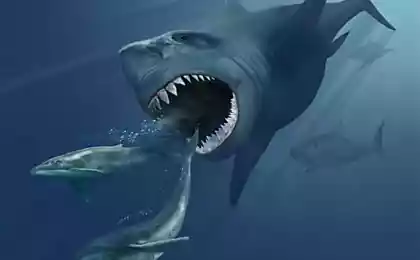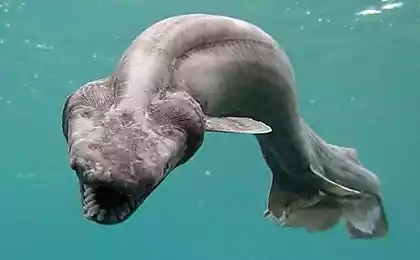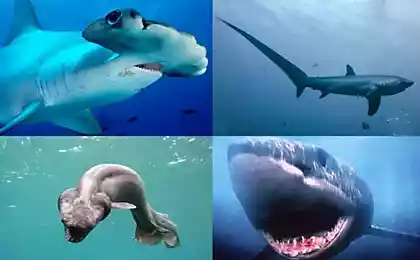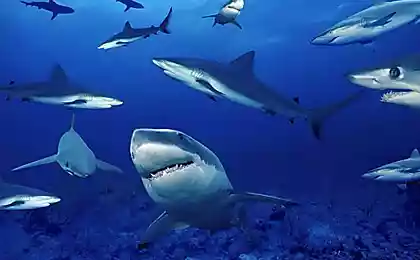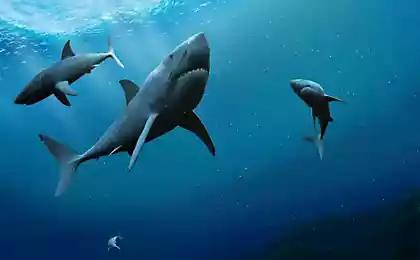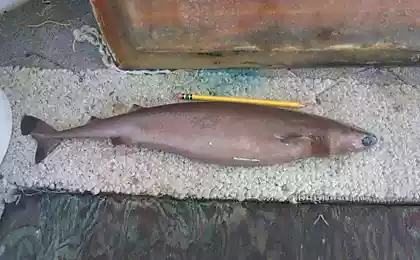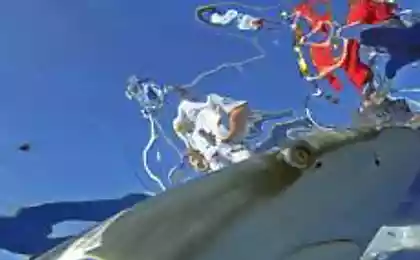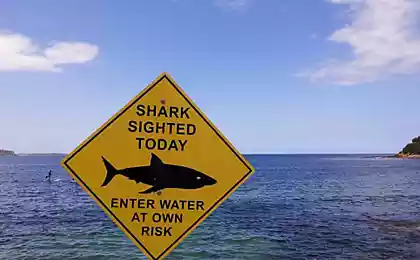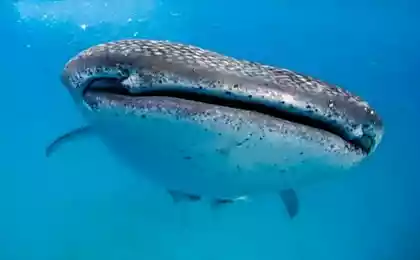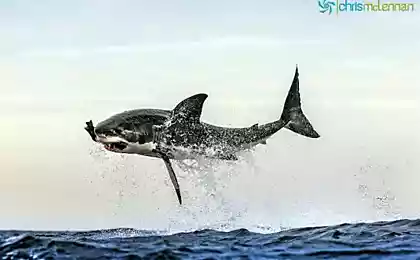1379
A new species of sharks
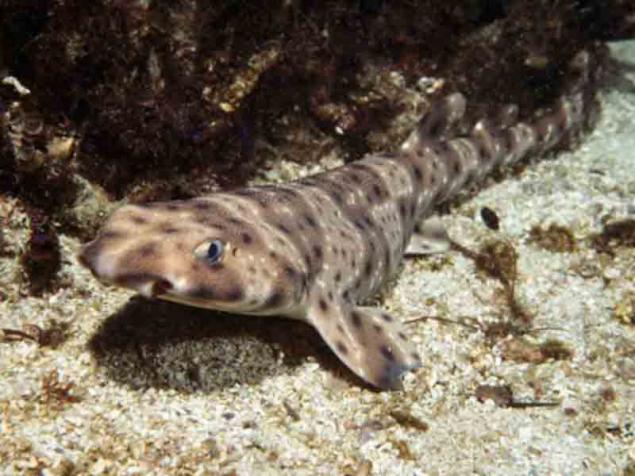
Let urbanists assert that in the world there is not one of the lost corner, where no human foot would visit. Most of us think that all the adventure and the unknown edge were only in the pages of books, and future generations of the world is not waiting for anything interesting, except computers, television and the Internet.
Expeditions Conservation International (CI) - Conservation International - again and again led to believe that the real opening of the person is yet to come.
About a year ago, biologists from CI discovered completely lost world, located within the so-called Coral Triangle - the territory, including Papua New Guinea, Malaysia, the Solomon Islands, the Philippines and East Timor. Discovered just hit the edge of the fantastic, and more like landscapes of the immortal novel by Arthur Conan Doyle than the highlands near noisy Indonesia.
Delineated on the site of the civilization of the mountains inhabited by hundreds of hitherto unknown to science species of animals, insects and birds. The seabed near the paradise also seemed densely populated, but at that time, biologists did not have time to explore all the inhabitants of the mountains of Foggia.
And now a new expedition led by Conservation International Makmanasa Roger went to study in the Bird's Head Seascape - is the name of the area where he was found "lost world". Makmanas known throughout the scientific world as "cursory biologist," renounced the prestigious post of the head of one of the University of Florida for the sake of free research on the nature, looking forward to the start of the expedition.
Scientist hoped that the underwater world uncharted territory also not fail in terms of new discoveries, because this region of the ocean is one of the busiest in the world, exceeding the quantitative and qualitative diversity of species, even the Great Barrier Reef. But even he could not imagine how successful will study.
Diving in unfamiliar waters expedition brought a lot of amazing discoveries. In the course of exploring the underwater bottom Bird's Head Seascape was found 24 species of fish and 20 new species of coral. But it turned out the most fantastic discovery of a new species of sharks - the representative of the ancient family of species diversity that seemed to scientists know almost everything!
Roger Makmanasa this discovery was particularly symbolic because it was the second type of shark, found them for his scientific career. The first kind Makmanas also discovered in Indonesian waters - it was a so-called epoletnaya shark - spotted predator, which moves through the pectoral fins.
The average sizes of the representatives of the form equal to one and a half meters, and female sharks were smaller than the males, which is not typical for the shark family. Makmanas described a new species in shark research journal Nature - This article is the first description epoletnoy sharks in the scientific literature.
Now a quick professor stood on the threshold of a new discovery that threatens to turn his life. Still - to open a new kind of shark! And not just tropical fish, and the oldest inhabitants of the ocean! This event promises to be acknowledged even those scholars who, after retirement from the University of Makmanasa considered him extravagant fanatic looking for adventure on his head and threw for the sake of real science.
Roger was lucky at the first dive. Among the huge coral darted thousands of colorful fish, which he saw for the first time in my life. And the experience he had a rather big: almost twenty years career at the Department of Ichthyology, where he defended his thesis research expeditions around the world, the study of the species diversity of the world's oceans and practice, practice, practice ... So Professor Makmanas could be full of confidence, that those fish that swim among the corals Bird's Head Seascape, science is not yet known.
In the process of studying the bottom biologist waited another surprise: straight but he was moving between corals shark. But how! Little predator was on the sand right on the side fins, using them instead of legs. This species of shark is not that no one has ever seen, no one could have imagined!
The manner of movement dwarf baby Hemiscyllium freycineti resembled fish-slide, or Anabas, which is found in the slow Indian rivers. However, this was a real shark! A new species of sharks feed mainly on mussels and corals, and because of their small size (about half) was perfectly safe for people.
Triumph is so fantastic discovery by Professor Makmanasom divided friends from Conservation International. And even former colleagues from the University of Florida study evaluated the importance Makmanasa.
Professor again called to the post of rector, and, to the greatest joy of staff, he again refused. Since the expedition has been more than five years, and Roger Makmanas certainly preparing once again to open a new, even more amazing view of the most interesting predators of the ocean - sharks.
Environmentalists from WWF talking about opening a dozen new species in Vietnam
Krasnoyarsk gold (10 photos)

